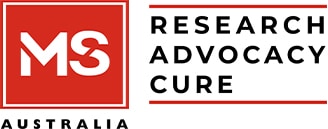- Ocrelizumab (Ocrevus®) is already listed on the Pharmaceutical Benefits Scheme (PBS) as an intravenous (IV) treatment for relapsing remitting MS.
- In July 2025, the Pharmaceutical Benefits Advisory Committee (PBAC) will meet to discuss new treatments to include on the PBS, including ocrelizumab delivered by subcutaneous (SC) (under the skin) injection.
- The addition of SC Ocrevus® would expand the clinical settings where people can be treated, would be delivered in a shorter timeframe and would be a convenient option for people who live remotely.
- The PBAC is calling for public submissions in support of this application.
What will the Pharmaceutical Benefits Advisory Committee be doing?
In July 2025, the Pharmaceutical Benefits Advisory Committee (PBAC) will meet to consider a proposal to recommend adding ocrelizumab (Ocrevus®) delivered as a subcutaneous (SC) (under the skin) injection to the Pharmaceutical Benefits Scheme (PBS) for adults with relapsing remitting MS. When it is included on the PBS, the cost of the medication is subsidised by the government, making it more affordable for people.
The PBAC considers several factors when making recommendations. Using clinical trial data, submissions from the community, as well as pricing data, the PBAC looks at the effectiveness and the cost of a treatment relative to other available medicines. Then it provides recommendations to the Federal Government on whether they think a medication should be included on the PBS. This decision by the PBAC is the first step in a process where final approval is given by the Federal Government.
What is ocrelizumab?
Ocrelizumab is a monoclonal antibody treatment that targets a protein called CD20 on B cells, a type of immune cell, which play a role in the MS disease process. Ocrelizumab reduces the number of B cells that express CD20 and thus reduces the number of relapses, the progression of disability and the number of new magnetic resonance imaging (MRI) lesions.
Ocrelizumab is already listed on the PBS, so why is the PBAC considering it again?
Ocrelizumab is already listed on the PBS for treating relapsing remitting MS, but only when it is delivered by intravenous infusion (IV or drip). However, a new method for administering ocrelizumab, by SC injection, is not currently listed on the PBS and thus is not subsidised by the government. So, people who take ocrelizumab as an SC injection would pay more than people who receive the same medication as an intravenous infusion.
SC ocrelizumab was approved by the US Food and Drug Administration to treat relapsing remitting MS in September 2024. It was also approved by the European Medical Agency to treatment relapsing remitting MS and primary progressive MS in June 2024.
What did clinical trials comparing both forms of ocrelizumab show?
A recent clinical trial (OCARINA II) compared IV and SC ocrelizumab in people with MS. The trial found that the two methods of delivering ocrelizumab had similar outcomes. Both treatment methods led to fast and sustained reductions in B cells and near-complete suppression of new MRI lesion activity. Also, over 97% of people in each treatment group were free of relapses up to 48 weeks from the start of the trial.
Disability levels in both treatment groups remained stable throughout the 48 weeks of the trial. Both treatment delivery methods had similar safety profiles, except for injection reactions which can occur with SC injections.
The OCARINA II trial found that 80.4% of people who tried both intravenous and subcutaneous methods preferred the subcutaneous treatment.
What are the advantages of SC ocrelizumab?
Both IV and SC ocrelizumab are given every six months, however, less time is needed to administer SC ocrelizumab. When ocrelizumab is delivered by IV, it is infused slowly through the vein, taking up to three hours. In contrast, when SC ocrelizumab is injected under the skin, it takes about 10 minutes, although you will be monitored for at least one hour after the first injection in case you have any reactions.
The SC option would also allow people to visit their local healthcare professional for their six-monthly treatment, instead of travelling to an infusion centre, which can be far away for those living in rural or remote areas.
What can we and the MS community do to support the inclusion of this MS treatment on the PBS?
MS Australia will be making a submission advocating for the SC ocrelizumab to be listed on the PBS, as we welcome affordable access to all treatment options that have been shown in clinical trials to provide safe and effective treatment for MS. No two people with MS are the same and having a range of treatments for MS on the PBS means people with MS have a greater choice and ability to find a treatment that suits them.
The MS community are also invited to provide comments in support of these applications. Consumer comments to the PBAC are due 28 May 2025 and can be submitted here.
More information about PBAC consumer comments is available here and here. For helpful tips for submitting consumer comments to the PBAC, please see here.
To see MS Australia’s submission, please see here.


